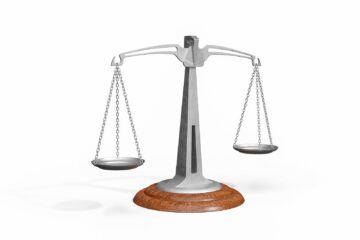![]()
INTRODUCTION
The Constitution of India provides for a single integrated judicial system with the Supreme Court at the apex, High Court at the middle (State) level, and District Court at the local level. One of the salient features of the Indian Constitution is the ‘Independent and Integrated judiciary’. It also provides a powerful judiciary system. Judiciary in India acts as a guardian protector of the Constitution and the Fundamental Rights of the people. But if ‘guardian protector’ will be removed from his/her office then?

The theory of ‘Separation of Powers’ by Montesquieu has soundly swayed its way into the constitution; bringing the checks and balances between the three main branches of the government i.e. The legislature, judiciary and executive and this is how only the Parliament has the power; to remove any High Court or Supreme Court in India. A District Court the judge may be removed after the confirmation of the High Court collegiums and signed by the Law Minister of respected State.
JUDGES AND THEIR AMPLE POWERS
Any judiciary is an integral part of a country, especially democracy. As India is the largest democracy, we have a big judiciary which makes sure it safeguards the interests of its citizens. The motto which has been followed by our Indian Judiciary is ‘Yato Dharmastato Jayah’; which means where there is righteousness, there is victory. The judiciary is the system of courts that interprets and applies the law. The role of the court is to conclude cases, including the determination of the relevant facts. Then the determination of the relevant law and application of the relevant facts to the relevant cases. The Indian Judiciary administers a common law system in which securities, legislation, and customs all codify the law of the land.
Indian Judiciary is consider to be the most powerful judiciary in the world. As a Judiciary is independent of the executive. It can easily safeguard the rights of the citizen to ensure peace and harmony. However, its role is not just limited to this only. It plays different roles to make sure there is smooth functioning in the country. The power of the judiciary includes making new laws. Judiciary is the rightful interpreter of our constitution as well as the current laws.
It has the power to create new laws as well as overrule policies that might violate our constitution. Furthermore, the judiciary also prevents any form of violation of the law. Similarly, it files a lawsuit against the person found guilty of doing the same. After that, a judge passes his verdict after listening to both parties closely and announces the judgment accordingly. Moreover, it also acts as an advisory body. It happens more than often that the executive or legislature seeks help from the judiciary to clarify issues regarding the constitution.
The three degrees of courts in India are well versed i.e. Supreme Court, High Courts, and Subordinate Courts. The Judges in these courts have different levels of jurisdiction. The higher courts overpower the lower courts and set precedents which the lower courts compulsorily comply to. The main function of the courts is to safeguard the laws and keep in check whether the government bodies are abiding by the law or not. It keeps the law supreme authority in the country. The courts have the power to decide the controversies between states inter se and between states and center. In criminal cases, the judges have full power to decide whether the alleged is guilty of the charges or not, the Judges decide the amount of compensation or jail time of the guilty. Not only this, but the courts have the power to declare a law void if they find it unconstitutional.
PROCEDURE OF REMOVAL
Any Supreme Court or High Court Judge can only be remove by the Parliament after the President’s signature. Whereas a Subordinate Court Judge can be remove by a written complaint; to which the collegiums looks into, if guilty then he/she is remove. After the Law Minister of the concerned state signs it.
- For initiating the impeachment process, a motion has to be move by either 100 Lok Sabha members of Parliament or 50 Rajya Sabha MPs. If the motion is admit, the Speaker of Lok Sabha or Chairman of Rajya Sabha constitutes an inquiry committee.
- This inquiry the committee has three members – a Supreme Court judge, a high court Chief Justice, and an eminent jurist. The committee frames charges and asks the judge to give a written response.
- The judge also has the right to examine witnesses. After the inquiry, the committee determines whether the charges are valid or not, and then it finally submits its report.
- If the inquiry committee finds that the judge is not guilty, then there is no further action. If they find him guilty, then the House of Parliament which initiated the motion may consider continuing with the motion.
- The motion is then debate and the judge (or his representative) has the right to represent his case. After that, the motion is vote upon. If there is two-thirds support of those voting, and majority support of the total strength of the House, it is consider to have passed. The process is then repeat in the other House.
- After that, the Houses send an address to the President asking that the judge be remove from office.
- The President then removes the Judge.
GROUNDS OF REMOVAL OF JUDGES
There are two grounds for the removal of the Supreme Court or High Court judges i.e. incapacity or misbehavior. These words are not defined under Constitution as the parliament has enact the acts which see into the matter, giving a procedure of investigation these acts are judges (INQUIRY) Act, 1968, and the Judges Inquiry Rules, 1969. As per constitution Article 217(1) (b), Article 124(4) and (5) follows the procedure which can remove the High Court or Supreme Court judges.
Removal of a judge from his office is not an easy task. The two grounds i.e. incapacity and misbehavior should be firstly prove by an investigation. This is mainly by in partial committee and ones these two grounds will be fulfill. Then he/she will be present in front of the Parliament. There are a few cases, where the extent of incapacity or misbehavior may not reach the level where he/she can be removed from his or her office. Under this the Bar Association or the Chief Justice of the concerned High Court will see into the matter and then submit it to the Chief Justice of India, thereafter he/she will decide on that matter.
One more case is also covered under the grounds of removal of judges i.e. of mental or physical incapacity, there would be a medical examination set by the investigation committee for the judges.
LAWS APPLIED
There are four constitutional laws that are apply on the grounds of the removal of Judges.
- Article 124(2)(b) of the Constitution: It says that a Supreme Court or High Court Judge may be removed in the manner given in clause (4) of the article.
- Article 124(4) of the Constitution: It says that a Judge of the Supreme Court shall not be remove from his office except by an order of the President pass after an address by each House of Parliament support by a majority of the total membership of that House and by a majority of not less than two-thirds of the members of that House present and voting has been present to the President in the same session for such removal on the ground of prove misbehavior or incapacity.
- Article 124(5) of the Constitution: It says that Parliament may by law regulate the procedure for the presentation of an address and for the investigation and proof of the misbehavior or incapacity of a Judge under clause (4).
- Article 217(1)(b) of the Constitution: It says that a Judge may be remove from his office by the President in the manner provided in clause (4) of Article 124 for the removal of a Judge of the Supreme Court.
The two Acts which have been apply for the grounds for removal of Judges in India. Judges (Inquiry) Act, 1968 consists of laws relating to the procedure of the investigation, powers of the Inquiry Committee, the report of the Inquiry Committee, and how this report would be address to the concern House of the Parliament. Judges Inquiry Rules, 1969 This act is basically like an extra hand to the Judges (Inquiry) Act, 1968, as it talks about the procedure of removal, the investigation, and the Inquiry Committee, etc.
CASE LAWS
No Judge till date has been removed in India; there have been attempts to remove Judges in India.
The first attempt for removal of a Judge in India was made on 12th March 1991, against the Supreme Court Judge v. Ram swami for financial irregularities, when the Speaker of Lok Sabha admit the motion, there was an Inquiry Committee set up, comprising Justice P.B. Sawant, a sitting Supreme court Judge, Chief Justice Desai of Bombay High Court and Mr. Chinnappa Reddy an ex-Supreme Court Judge as a jurist, this three-member unbiased Committee was investigating the Judge according to the Judges (Inquiry) Act, 1968, but before it could submit the report the Lok Sabha was dissolved.
§ C.V. Nagarjuna Reddy was a Justice of Andhra Pradesh High Court; the Rajya Sabha tried to impeach him twice but failed. He was accused of victimizing a Dalit junior Civil Court Judge, interfering in judicial processes and caste slurs.
§ Soumitra Sen was a Justice of Calcutta High Court, he was charged for misappropriating 33.2 lakhs under his custody. He was removed by the Rajya Sabha but he tendered his resignation in the year 2011 so that he could still have the post-retirement privileges.
CONCLUSION
The judiciary is the system of courts that interprets and applies the law. Judges are for their dexterity towards their work as they are the moderators of disputes and the nation relies on their judgments. The judiciary is more important than ever now because injustice against people has risen to a great extent in our country. We need it to monitor the people and punish them for their crimes so everyone feels safe and included. The judiciary plays a major role in a democracy. It safeguards the fundamental rights of the people.
Further, it makes new laws and ensures to punish anyone violating these laws. It also administers and appoints officers. Removal of Judges is a rigid process in India and that is for a reason so that the powerful authorities won’t misuse power to remove a concerned Judge. The parliament has the only power to remove any judge from his/her office, the reason behind this is the checks and balances in our country and is one of the important element so that no one between the Legislature, Executive and Judiciary feel supreme about the powers they have



0 Comments